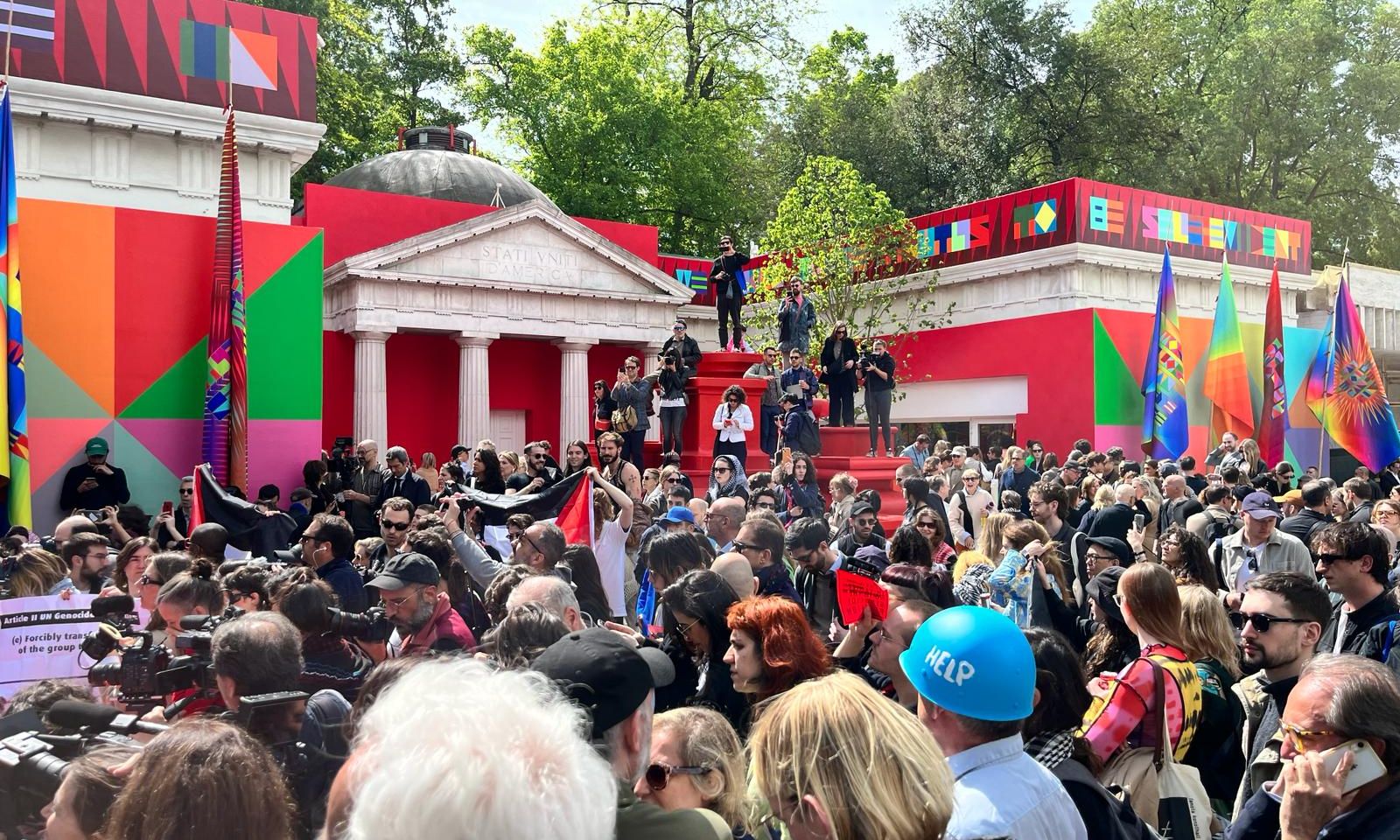Protesters outside the US pavilion at the Venice Biennale © The Art Newspaper
Protesters interrupted the Wednesday preview of the Venice Biennale, speaking out against international support for the Israeli government’s military campaign against Gaza.
The group, numbering around 70, started in front of the US and Israel pavilions, and then made their way to the French, British, and German pavilions. At each, in a mix of Italian, English they called out the relations between the Western nations and the Israeli state, and in particular the US and Germany’s role exporting arms.
The protests were organised by ANGA, the Art Not Genocide Alliance, the international group of artists and activists who were also behind the petition calling on the Venice Biennale to exclude Israel from this year’s programme. Just yesterday, the artist representing Israel, Ruth Patir, and the curators Mira Lapidot and Tamar Margalit announced that the pavilion would be closed until a ceasefire was reached and hostages were released.
ANGA organised Wednesday’s action as well as an exhibition of Palestinian artists to interrupt "business-as-usual in the art world", according to a statement on their website. “The Biennale was modelled on the Eurocentric world fair and retains these geopolitical biases,” the website says, noting that the event has a history of being used as a site for international political protests.
The Israel-Gaza war is a major feature at this year’s biennial, with a number of works in the pavilions and the international exhibition as well as several collateral events expressing support for the Gazan people. These also include the Freedom Boat, which has organised a series called Readings for Palestine, taking place on a boat docked off the Giardini; a statement to be read by the museums alliance L’Internationale denouncing the war and censorship around it; and a number of exhibitions showing work by Palestinian artists, including Palestinian Art in the Streets, also organised by ANGA, an exhibition by the group Artists and Allies of Hebron, and a large-scale painting by the Gazan artist Malak Mattar at Ferruzzi Gallery.
According to people involved in the protest who did not want to speak publicly, the members of ANGA are affiliated with the art world and were thus able to gain entry before the biennial officially opened to the public. Though rumours of protests at the biennial circulated before the event, no concrete information was made available until the last moment. A string of WhatsApps went out among what one protestor called “trusted sources,” including Palestinian artists who have been involved in some of the exhibitions, saying to meet at the Israel and US pavilions, which are next door to each other, for an action.
There was no discernible attempt from the Venice Biennale organisers to stop the protests, and most of the visitors looked on or joined in.

